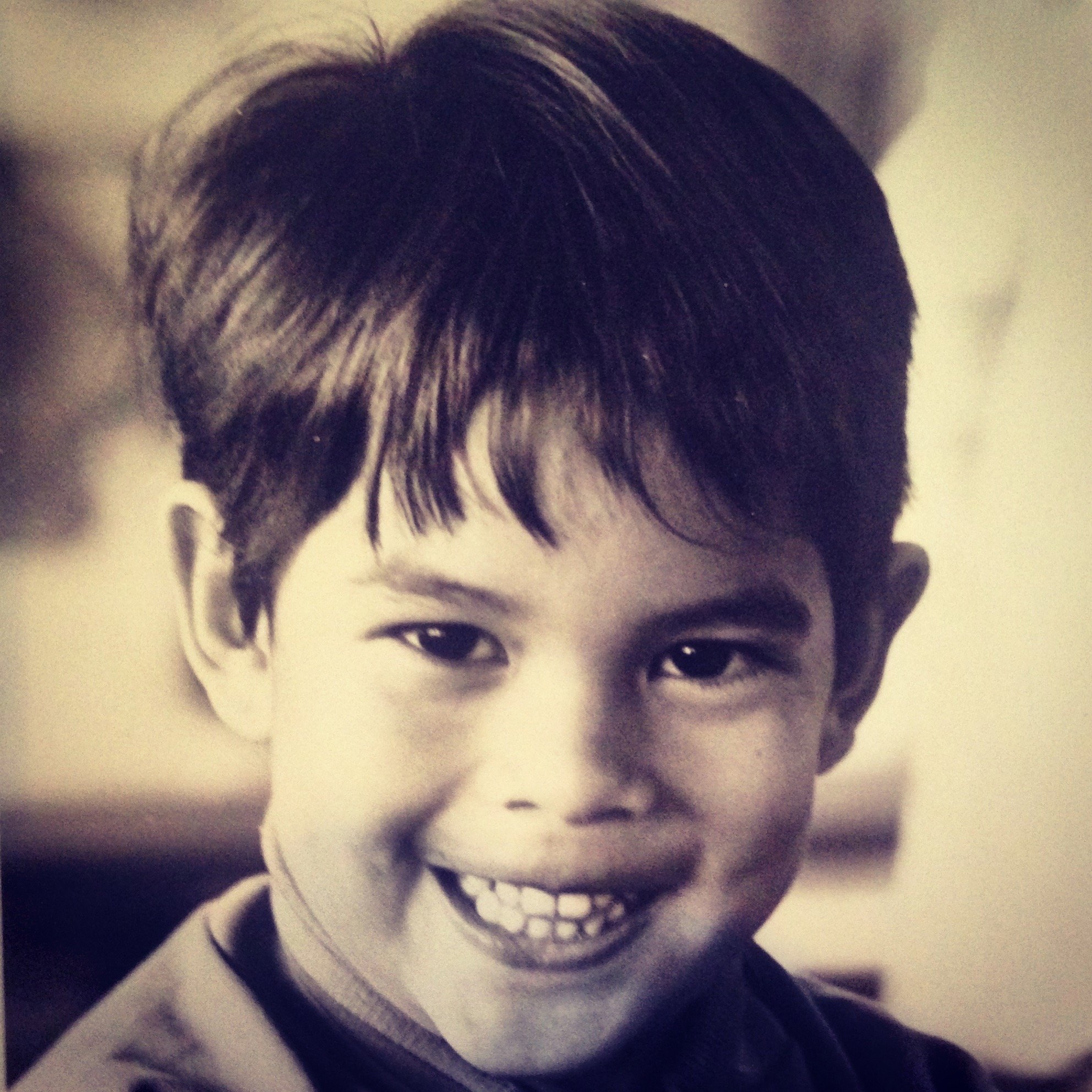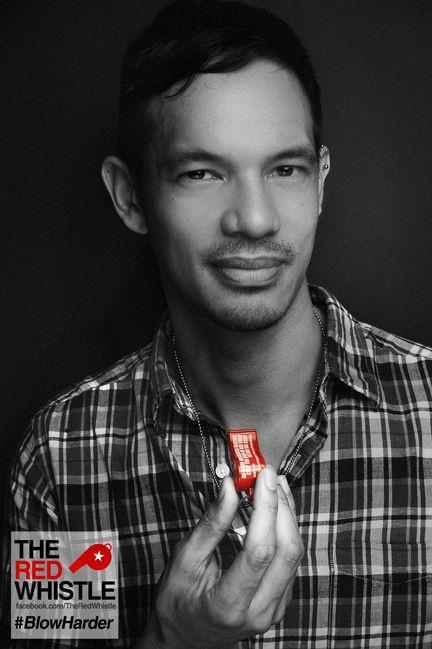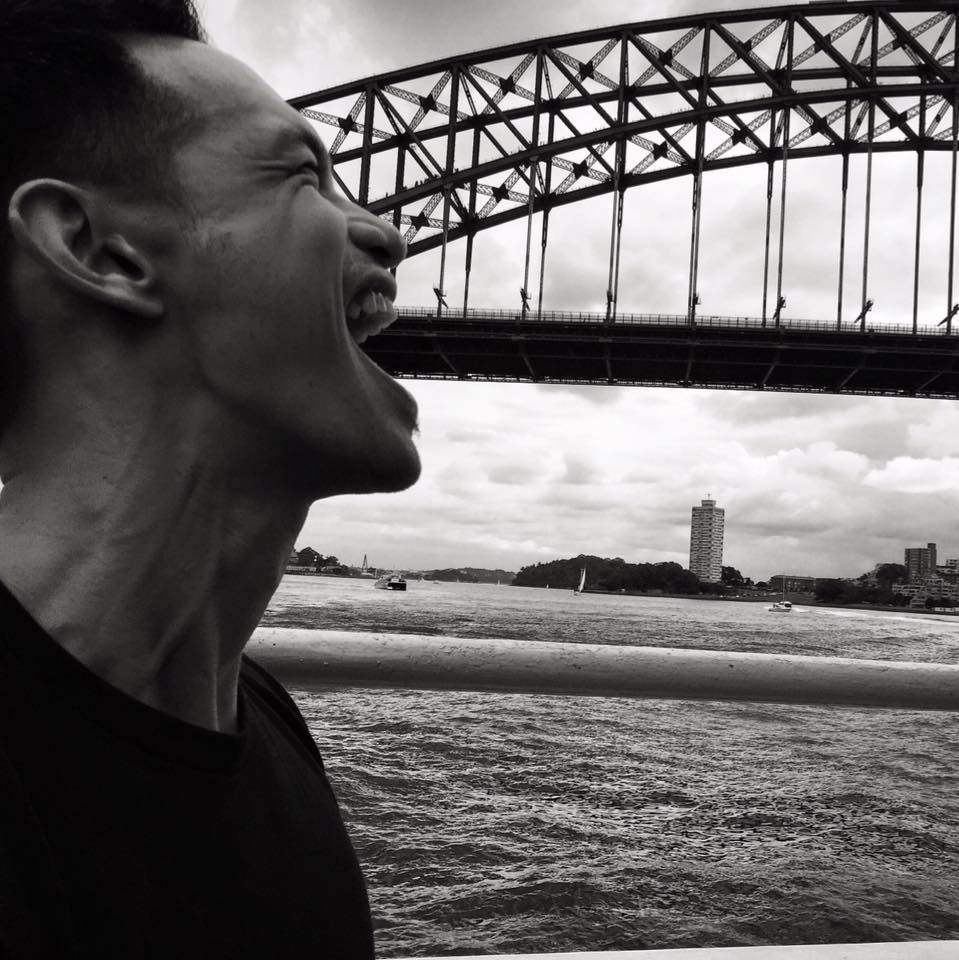
Dear Straight People,
Meet 44-year old Filipino Laurindo Garcia, a prominent HIV/AIDs activist and the founder of social enterprise the ‘B-Change Group‘.
The story you’re about to read is not a new story. In fact, Laurindo’s story has been told numerous times. But it’s a story that I’ve always wanted to cover. One that required me to approach no less than 3 mutual friends before I was finally able to connect with the man himself.
The reason why I went to such lengths to get Laurindo’s story was simple. Great advancements may have been made in the fight against HIV/AIDs. But the social stigma remains, particularly in Asia where misconceptions as old as the disease itself continues to hold widespread prominence.
As one of a handful of openly HIV positive gay men in Asia, Laurindo’s story has the profound ability to shatter many of these misconceptions. So yes, Laurindo’s story may not be new. But it’s a story that needs to be known.

Born in Sydney, Laurindo had his first same-sex crush when he was just 6-years old. Even at that tender age, Laurindo kept the crush he had on his male classmate a secret because he knew it was something society would frown on.
Even at a young age, I knew these feelings made me different from all the other kids and it was something that must be kept a secret.
It wasn’t till Laurindo was 18 did he finally muster the courage to come out of the closet. The first person he came out to was an openly gay African-American co-worker named Tarvin.
Needless to say, Tarvin took the news well and made it clear I could talk to him if I ever needed a friendly ear.
Thereafter, he took on the role of guardian angel. Tarvin was responsible for taking me to see my first Mardi Gras parade.

Coming out to his co-worker may have been easy. But coming out to his family was a whole other matter.
At that age, I struggled to think of ways of how to tell my parents.
I was still coming to grips with saying “I am gay” aloud, let alone finding the “right time” to break the news.
In the end, there was no need for Laurindo to find an opportune moment to break the news. His dad asked him point-blank if he was gay.
Given the circumstances, I didn’t see any point in lying. We had a long talk.
He proceeded to explain that although he could rationalise my situation, it would take some time for him to learn to accept it, but he emphasised that he still loved me no matter what.
Little did Laurindo know, getting his family to accept his sexuality wouldn’t be his greatest challenge. The real test came when Laurindo’s world turned upside down in 2004.

Soon after starting a new job in Singapore, Laurindo was required to undergo a routine company medical check-up. In just a matter of minutes, Laurindo’s world came crashing down.
My heart shattered into a thousand pieces as I stood outside in the clinic’s reception area.
Not only did I have to grapple with understanding the health implications of the new diagnosis, I was also worried that the police would come after me.
As a result of his diagnosis, Laurindo lost his job, had his visa application denied and found himself being barred from entering the country. He also had to once again, grapple with the fear of rejection from his loved ones and did not know who or where to turn to for help.
The people at the clinic did not provide any information or referrals to help me deal with the situation.
This experience had a profound affect on me. It would become the catalyst for the work that I am doing today at B-Change.

Thankfully, Laurindo’s social circle readily accepted him when he came out to them. Most touching of all however, was how his boyfriend Alan continued to stand by him despite the fact that they had only just got together when Laurindo was diagnosed.
13 years later, we’re still together. He’s still HIV negative.
He’s gone on to do amazing work for the LGBT community in Singapore. I’m inspired by him.
In 2011, Laurindo decided to take the plunge by putting his own face to the disease after consulting with family and friends,
I came to the conclusion that nothing would change in Asia unless more gay Asian men living with HIV made their voices heard and took action.

Media generally portrayed HIV positive gay men as hidden, shameful figures who live in the shadows.
Before 2011, there were only a handful of brave men in the community who spoke up.
In 2011, Laurindo chose to come out publicly during the AIDS Candlelight Memorial held in Manila. When he revealed his condition during his speech, Laurindo was greeted with thunderous applause and a standing ovation. In doing so, he became only the third HIV positive gay man in the Philippines to come out publicly.
Laurindo would go on to share his story on many other platforms in the years to come with the aim of clearing the air and shedding light on what it’s really like for people living with HIV/AIDs in the world today.

In the same year that he came out publicly, Laurindo also founded a social enterprise called the B-Change Group. The B-Change Group is a not-for-profit organisation that promotes social change through the use of technology.
One notable project courtesy of the B-Change Group is an inclusivity app called BE that aims to assist queer people and other diverse groups in finding inclusive providers of health, social support, employment and other services. The innovative app was recently named a finalist in the World Changing Ideas award alongside finalists that included the World Food Programme and Ford Motors!
Originally a three person team back in 2011, the B-Change Group now has hubs in Manila, New York and Singapore.

When Laurindo is not busy trying to save the world, his daily life isn’t all that different from most other people.
He only needs to consult the doctor once a year regarding his HIV condition and on times when he does fall sick, it generally has nothing to do with his HIV status. During his free time, Laurindo enjoys watching movies and listening to his favourite tunes.
I’m an avid fan of music and film.
For music, Anderson .Paak, The Dirty Projectors, Solange and Aimee Mann are my current earworms.
For movies, Moonlight is the most memorable film of recent times for me. I watched it three times.
Check out the Q&A section below as Laurindo tackles everything from the challenges of living with HIV/AIDs to common misconceptions plaguing the heavily stigmatised disease.

Q&A
1. How was your first coming out experience like?
My first coming out experience was to a co-worker at a restaurant I was working at when I was in university. I was 18 years old.
I clearly remember seeing the words fall out of my mouth; “I have something to tell you. I am gay as well”.
Maybe I felt safe telling him because of the semi-detached nature of work relationships, it was highly unlikely that our friendship circles were connected.
2. How has your family responded to your sexuality?
The months after coming out to my Dad were characterised with a new found honesty, but it wasn’t all rosy. Occasionally, he would call me out if I behaved effeminately:
“Your sexual preference is ok with me,” he would say, “but if you don’t want a sex change then act like a man.” Being under his watchful eye was oppressive, but I was not one to rebel especially while I was living in the family home.
Ultimately, things improved. My dad was instrumental in helping me come out to my mother. To this day, I still remember the words that helped iron things out between my mother, father and I:
“What would you prefer?” he said to us, “For Laurindo to live a lie with us for the rest of our lives? Or would you prefer a family where we live honestly and openly with each other?”
Those words have stayed with me to this very day. Those words underpinned my decision to be upfront with my family when I was diagnosed with HIV.
3. How was the response like for you when you started coming out as being HIV positive to your social circle?
My friends were and continue to be incredibly supportive. Since coming out as HIV positive, I’ve noticed the ease with which my friends and I can discuss issues of sexual health. My opening up led to conversations that helped dispel many of the myths related to HIV.
None of this openness would have been possible had it not been for Alan, my partner. We had just started dating when I was diagnosed in 2004. Alan also got tested and thankfully his result was negative. Given the situation, I would not have blamed him for wanting to end our relationship at that time.
Instead, the inverse happened; HIV brought us closer together. It compelled us to be honest about what we wanted out of our lives and each other.
4. What made you decide to come out publicly as a HIV positive gay man back in 2011?
In my view, gay men owe a debt of gratitude to the many queer women and straight allies who advocated on behalf of the gay community for more than 30 years of the HIV epidemic. These change makers demanded that barriers to HIV testing and treatment be torn down.
I believe the time to repay that debt is long overdue. I personally want to pay it forward by doing more to help other people.
Before I made my first speech in Manila, I consulted Alan and my family. I discussed what I wanted to do and why I wanted to do it. Although there was some initial hesitation, everyone understood the importance of speaking out and supported me in my decision.
5. What has been the biggest challenges for you as an openly gay man living with HIV/AIDs?
HIV is not the only issue our community is facing and getting people to see beyond HIV has been tough.
Our community is facing a whole raft of health challenges: depression, isolation and other mental health issues, rising crystal meth addiction, access to PreP, affordable prevention, care, treatment and support services, the list goes on.
For a community that is stereotyped for being body conscious, our obsession with health seems to be only skin deep. We could do better with a more holistic approach to health and well-being.
6. What was the most negative reaction you’ve encountered in response to your HIV status so far?
Being fired, threatened with deportation and eventually barred from entering a country because of my HIV status definitely ranks highly. Thanks to the support of my partner, my family and friends I mounted a challenge to the system and succeeded. The laws have since been changed, but much more work needs to be done to remove discrimination related to HIV.
On a personal level however, the most negative reaction I have encountered is self-inflicted; there is a little voice in my head that is ashamed of being HIV positive. I have learned to turn down the volume on that little voice, but I know it’s still there and I have to live with it.
7. What has been the greatest reward and challenge for you in your work with HIV activism?
The greatest reward has been learning from some of the most amazing community leaders from around the world – many of whom are queer women, women living with HIV and activists fighting for racial and ethnic equality. Being around these people brings me hope.
That said, maintaining hope is the biggest challenge. The current state of politics in our region and around the world has brought out the ugly side of humanity. On my bad days, I wonder if humanity is worth the effort.
8. What advice do you have for people living with HIV/AIDs?
Nothing changes unless you start making your voice heard and getting involved.
9. What do you think is the biggest misconception that people have about HIV/AIDs?
The biggest misconception is that having HIV spells the end for a person’s sex life or a person’s prospects for a relationship.
Two factors drive this misconception, the first being related to the fear of infecting others. Thankfully we live in an age where HIV medicines – called antiretrovirals – are widely accessible. These medicines help our bodies suppress the virus. If a person living with HIV is taking antiretrovirals regularly, the risk of infecting others is virtually zero. Mounting scientific evidence since 2008 has supported this claim.
Fear of rejection is a second driver of this misconception. I know from experience that being diagnosed HIV positive sometime gives our inner critics license to assert itself. Self-criticism is something all people must wrestle with, regardless of their HIV status. There’s no quick fix for this. Improving self-awareness is a good start.

Once again, Dear Straight People would like to thank Laurindo Garcia for sharing his story with us.
If you would like to keep up to date with how Laurindo is doing, you can connect with him through Facebook or Instagram via @laurindogarcia. You can also find out more about B-Change here.

Support Dear Straight People On Patreon
Contrary to popular belief, content creation takes up considerable time, effort and resources. Support Dear Straight People and our mission in producing LGBT+ content by joining us on Patreon!
If you like what you read, follow Dear Straight People on Facebook, Instagram via @DearStraightPeopleIG and do subscribe to us on our YouTube channel!